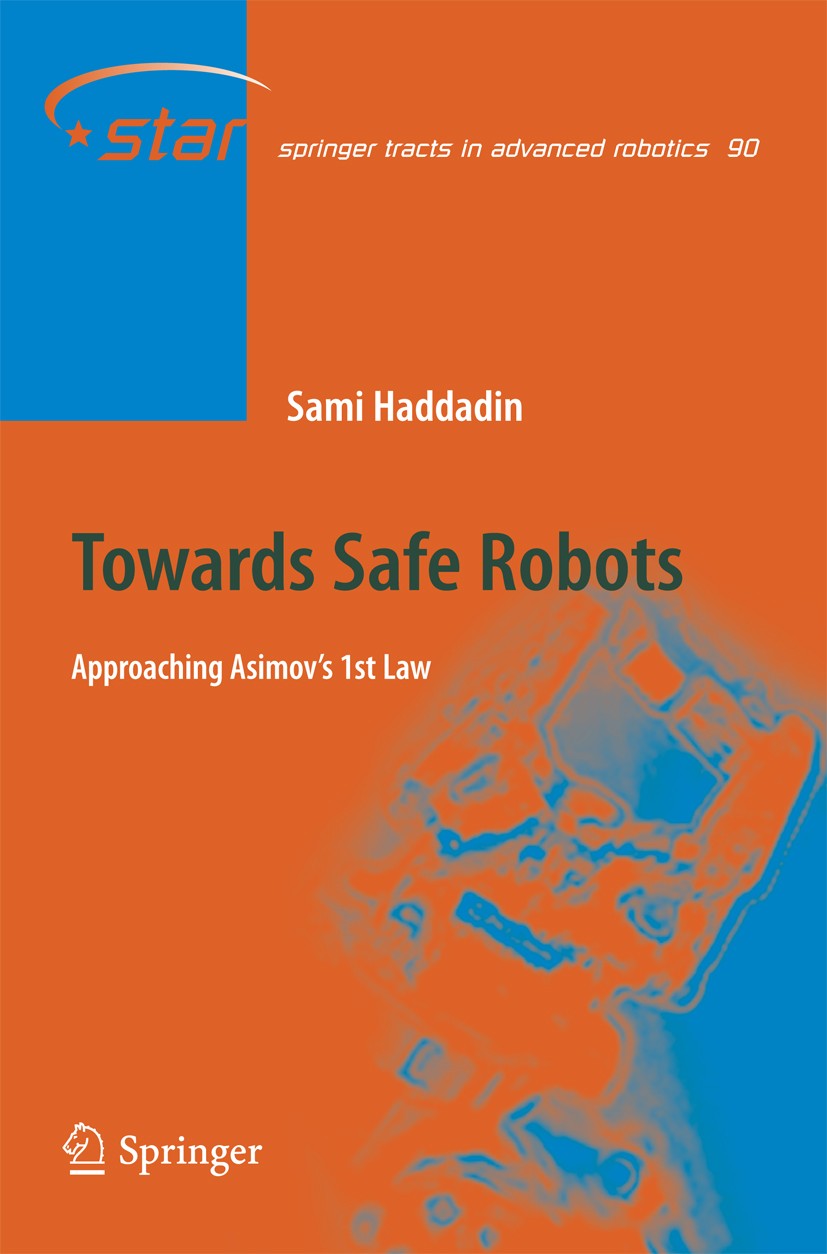| 书目名称 | Towards Safe Robots |
| 副标题 | Approaching Asimov’s |
| 编辑 | Sami Haddadin |
| 视频video | http://file.papertrans.cn/928/927002/927002.mp4 |
| 概述 | Covers safe robots for human-robot interaction from a holistic point of view.Thorough human injury biomechanics analysis in robotics.Presents collision detection and reaction for torque controlled rob |
| 丛书名称 | Springer Tracts in Advanced Robotics |
| 图书封面 |  |
| 描述 | .The vision of seamless human-robot interaction in our everyday life that allows for tight cooperation between human and robot has not become reality yet. However, the recent increase in technology maturity finally made it possible to realize systems of high integration, advanced sensorial capabilities and enhanced power to cross this barrier and merge living spaces of humans and robot workspaces to at least a certain extent. Together with the increasing industrial effort to realize first commercial service robotics products this makes it necessary to properly address one of the most fundamental questions of Human-Robot Interaction: How to ensure safety in human-robot coexistence? .In this authoritative monograph, the essential question about the necessary requirements for a safe robot is addressed in depth and from various perspectives. The approach taken in this book focuses on the biomechanical level of injury assessment, addresses the physical evaluation of robot-human impacts, and isolates the major factors that cause human injuries. This assessment is the basis for the design and exploration of various measures to improve safety in human-robot interaction. They range from con |
| 出版日期 | Book 2014 |
| 关键词 | Asimov; Control; Fault Detection and Isolation; Human Biomechanics; Injury Analysis; Planning; Robotics |
| 版次 | 1 |
| doi | https://doi.org/10.1007/978-3-642-40308-8 |
| isbn_softcover | 978-3-662-51038-4 |
| isbn_ebook | 978-3-642-40308-8Series ISSN 1610-7438 Series E-ISSN 1610-742X |
| issn_series | 1610-7438 |
| copyright | Springer-Verlag Berlin Heidelberg 2014 |
 |Archiver|手机版|小黑屋|
派博传思国际
( 京公网安备110108008328)
GMT+8, 2025-12-27 18:46
|Archiver|手机版|小黑屋|
派博传思国际
( 京公网安备110108008328)
GMT+8, 2025-12-27 18:46


